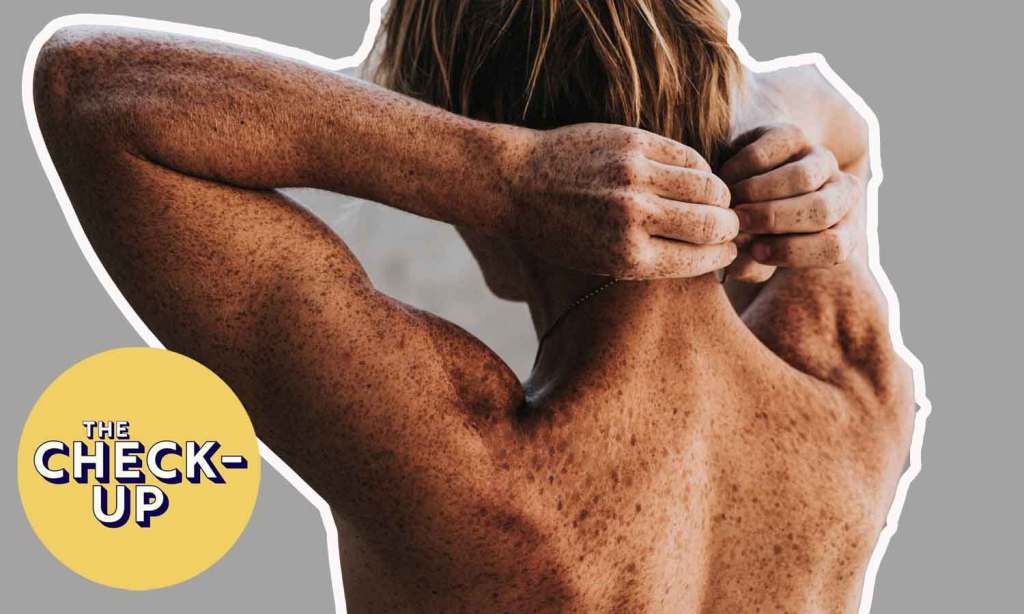During a recent survey of The Latch’s audience, we discovered that 37% have never had a skin check before and 27% haven’t had one in a few years. While scary, these figures aren’t surprising given that Australia has one of the highest rates of skin cancer in the world. Despite the prevalence of skin cancer amongst Australians, many of these cases are entirely preventable and, when detected and treated early, 90% of cases can usually be cured.
With this in mind, The Latch has created The Check-Up — a content series that will educate you on all things sun safety as well as the seriousness of skin cancer and specifically, melanoma. Check back each week for helpful and informative content on everything you need to know about this important topic.
Is it simply a harmless mole or is it melanoma? It’s a worthwhile question, considering a mole can change from benign to cancerous relatively quickly. Almost all humans naturally have moles — although some more than others. Unfortunately, the more moles someone has, the higher the risk of melanoma.
While people aren’t generally born with moles, these skin growths usually develop during childhood and your early teenage years. According to the Cancer Council, by the age of 15, Australian teenagers usually have an average of 50 moles on their body. Moles become of concern when they change shape or colour or feel raised on the skin when previously it was flat.
So, what’s the difference?
The anatomy of a mole
Generally speaking, moles are brown spots that can develop anywhere on your body from your scalp to your armpits, under nails and even between your fingers and toes. These growths are caused when cells in the skin (called melanocytes) grow in clusters or clumps. According to Mayo Clinic, melanocytes are distributed throughout your skin and produce melanin — the pigment that gives your skin colour.
For the most part, moles are pretty innocuous spots that range from 1 mm to 10 mm in size and usually look alike. Cancer Council says that most moles are uniform in shape and even coloured, and they can be raised.
Observing moles closely allows you to notice when they change, in terms of colour and shape, and means you’ll be able to act on any difference quickly. If a mole has appeared after the age of 25, this should be checked by a doctor.
The deal with melanoma
Melanoma is a form of cancer that develops in the skin’s pigment cells (those little things called melanocytes, remember?). These cells produce pigment in order to help protect the skin from ultraviolet (UV) radiation, generally from the sun, and voilà, a mole is born.
According to Melanoma Institute Australia, things become worrisome when the melanocytes in the mole begin to grow and divide in an uncontrolled way. If these cells start to grow in an unregulated way — specifically downwards or outwards into lower layers of the skin — they can become a melanoma, which is the most serious form of skin cancer.
Melanoma is particularly concerning as it can grow very quickly when left untreated and can spread through your skin to enter your lymphatic system or bloodstream, which can spread to other parts including the lungs, liver, brain or bone.
“There are different types of skin cancer, and these can be divided into the melanoma and the non-melanoma skin cancers (such as basal and squamous cell carcinomas),” Dr Annika Smith, a Fellow of the Australasian College of Dermatologists and consultant dermatologist at several private clinics, including Melanoma Institute Australia, told The Latch.
“With respect to melanoma, which is by far the least common skin cancer but the one that is the most deadly, about 70% of melanomas we think arise as new lesions on the skin. So, in this case, you’re looking out for something new on the skin. About 30% arise within a preexisting mole or spot on the skin.
“And in these cases, you’re looking for a change in size, shape, colour, or new symptoms associated with a mole or a lesion on the skin. Broadly speaking, with melanoma, you’re looking for the outlier lesion or the lesion that may look different from the rest of your spots, and we’ve got the ABCDE rule to help us on this front.”
Even with all of this information at your disposal, if you’re worried about any moles or lesions on your body, go and get them checked as soon as you can. Conducting a skin check on yourself every month at home alongside a professional check every year, according to your risk, means you’re up to date with your skin health.
For more information on the ABCDE rule and how to conduct a self-check at home, click here.
Skin Check Champions will be encouraging Australians to “Strip Off for Skin Cancer” during National Skin Cancer Action Week (Nov 21-27). For more information, click here and to get involved, click here, book a skin check via the local clinic finder and post some photos and videos on your socials showing a little skin.







